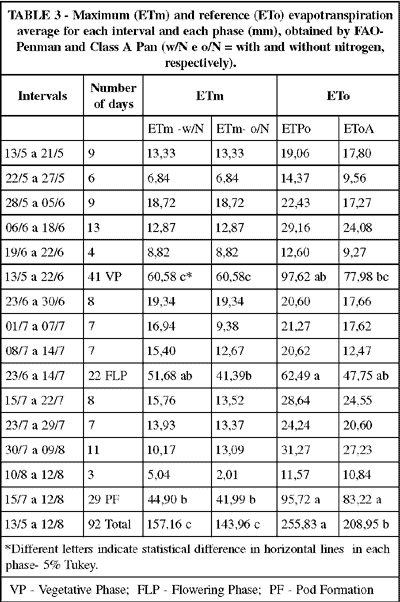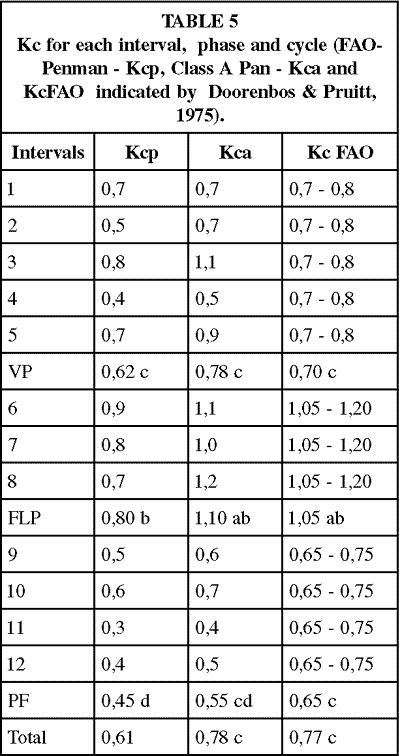A study of water use by bean winter crop (Phaseolus vulgaris, L., cv. Carioca) was carried out in a Red Yellow Latosol, clay texture. A furrow irrigation system maintained soil water potentials higher than -40 KPa. Two broadcast nitrogen treatments (0 and 30 kg N/ha) were applied 25 days after planting. The major objectives were to study the nitrogen and evapotranspiration interaction and measure the crop coefficients (Kc). The maximum average evapotranspiration (ETm) was 1.71 mm/day, or 157.16 mm over 92 days of observations; the ETm values for the vegetative (1), flowering (2) and pod formation (3) phases were 1.48, 2.35, and 1.50 mm/day, respectively, for the 30 kg/ha nitrogen treatment, and 1.48, 1.88 and 1.45 mm/day for the no nitrogen treatment. The crop coefficients (Kc = ETm / ETo) were 0.62 and 0.78 for the phase 1, 0.80 and 1.10 for the phase 2, 0.45 and 0.55 for the phase 3 and 0.61 and 0.80 for the entire cycle, based on the FAO-Penman and Class A Pan reference methods (ETo), respectively. The latter one was the best approach to estimate maximum water use by winter bean crop. Nitrogen treatments did not affect evapotranspiration significantly. However, the measured evapotranspiration obtained from the water balance method was 59.78 and 27.12% higher in the flowering than in the vegetative phase, respectively, under 30 and 0 kg N/ha.
evapotranspiration; crop coefficient; irrigation





